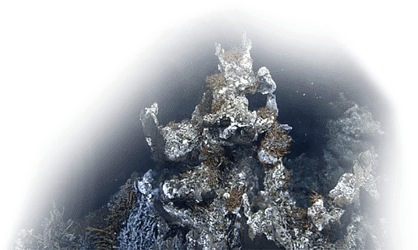This series of forensics experiments began in 2006 when Dr. Gail Anderson, a forensic entomologist from Simon Fraser University deployed the first pig carcass – a human body proxy - at 96m in Saanich Inlet. A subsea camera connected to the VENUS network was the main research instrument to monitor state of the carcass. Using the interactive capability of the networked subsea camera, Dr. Anderson conducted observations, took photos and recorded videos of the events, connecting to camera over the Internet from her home and office at Simon Fraser University as well as at various locations around Canada and the world. Initial results revealed that despite low oxygen conditions in the Saanich Inlet, a large number of crustacea removed the bulk of the soft tissue very rapidly. Captured images and supporting water property observations allowed her to analyze animal behaviour and helped to shed light on the role of various species in the decomposition process.
Alerts
SHOWING 3 RESULTS
Showing matches for "forensics"
CSI Salish Sea
Overview
CSI Salish Sea Completes with 10th Deployment
Overview
Blog post by [Dr. Gail Anderson](http://www.sfu.ca/~ganderso/). Originally posted on Wiring the Abyss 2014 Expedition portal.
Friday September 19th, 2014 marks a milestone as it will be the 10th in a series of carcass deployments in the Salish Sea. Almost a decade ago, Dr. Verena Tunnicliffe saw me give a talk at the University of Victoria on forensic entomology and she invited me ‘on board’ VENUS to deploy a pig carcass as a human proxy under a camera at the bottom of the Saanich Inlet. I was the first external researcher in VENUS. **No-one had ever been able to conduct such research** – to observe in real time what happens to a body in the marine environment. That first deployment and the three subsequent ones were during an unfortunate time when a [number of human feet in running shoes were washing ashore](http://en.wikipedia.org/wiki/Salish_Sea_human_foot_discoveries). These sad cases became a media sensation around the world, leading the media and the public to make unfounded claims of murder and dismemberment. The early pig videos clearly showed the police and public alike that disarticulation of a foot is normal and common in decomposition in these waters (Fig. 1). These deaths were not foul play. My colleague [Dr. Lynne Bell](http://www.sfu.ca/~lynneb/), a forensic anthropologist, joined the team in 2012 and, funded by the Canadian Police Research Centre and Department of Defence, we began the most recent set of experiments.
These crime solvers are real pigs
Overview
# ONC Spring Expedition 2015 – March 28 to April 2 in the Strait of Georgia Observatory
When the M/V Oceanic Surveyor tied up at the dock in Steveston B.C., forensic anthropologist [Lynne Bell](http://www.sfu.ca/~lynneb/) was eagerly awaiting the tray of bones from pig carcasses #15 and #16, retrieved from Ocean Network Canada’s Strait of Georgia east observatory site.
Stay up to date with ONC
Subscribe

Ocean-Climate Building University of Victoria
#100, 2474 Arbutus Road, Victoria, BC, Canada, V8N 1V8
info@oceannetworks.ca+1 (250) 472-5400Marine Technology Centre University of Victoria
#106, 9865 West Saanich Road, North Saanich, BC, Canada, V8L 5Y8
info@oceannetworks.ca+1 (250) 472-5400@ 2025 Ocean Networks Canada. All rights reserved.